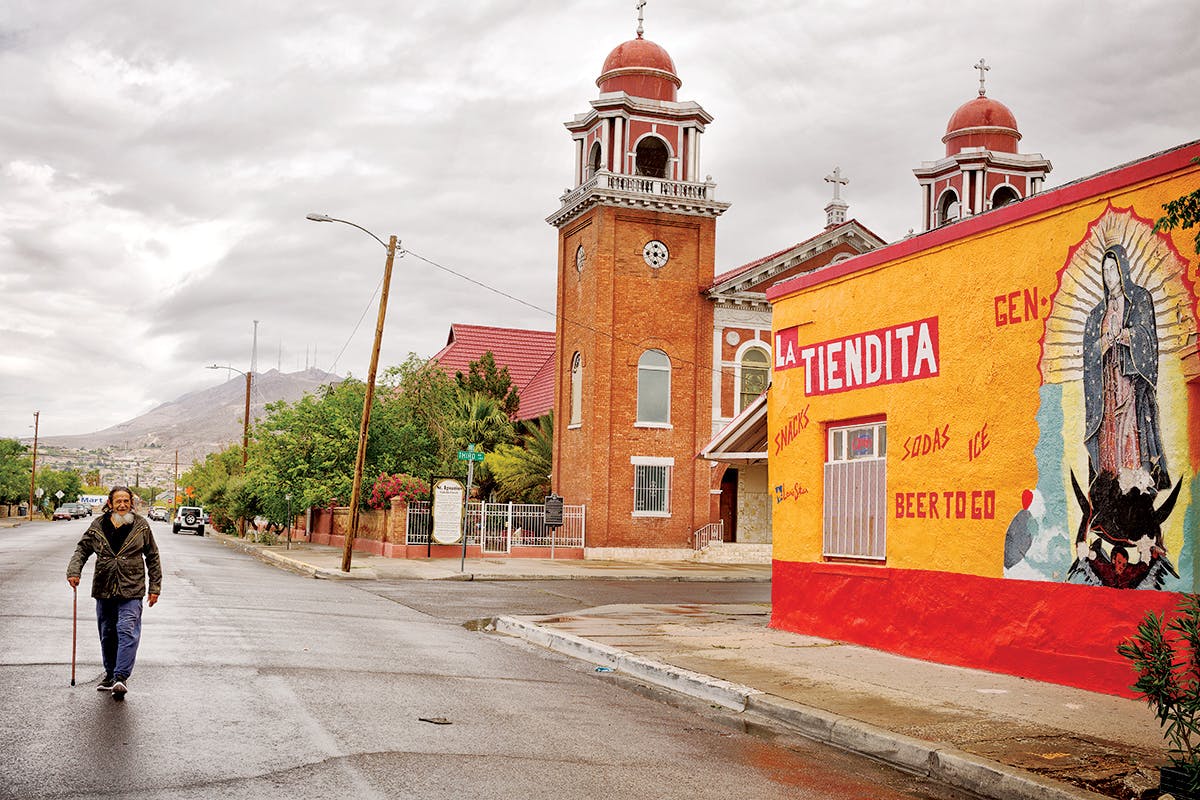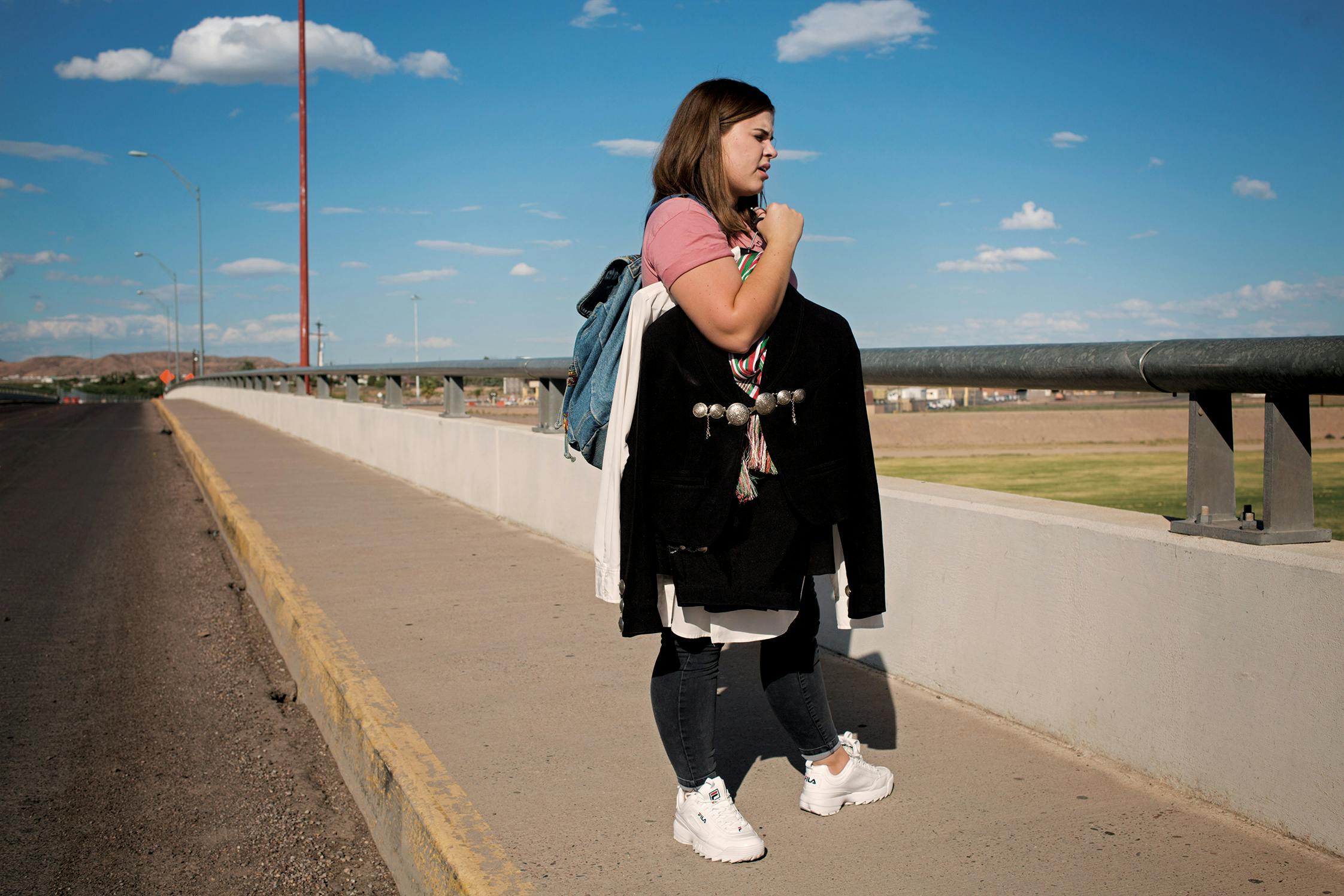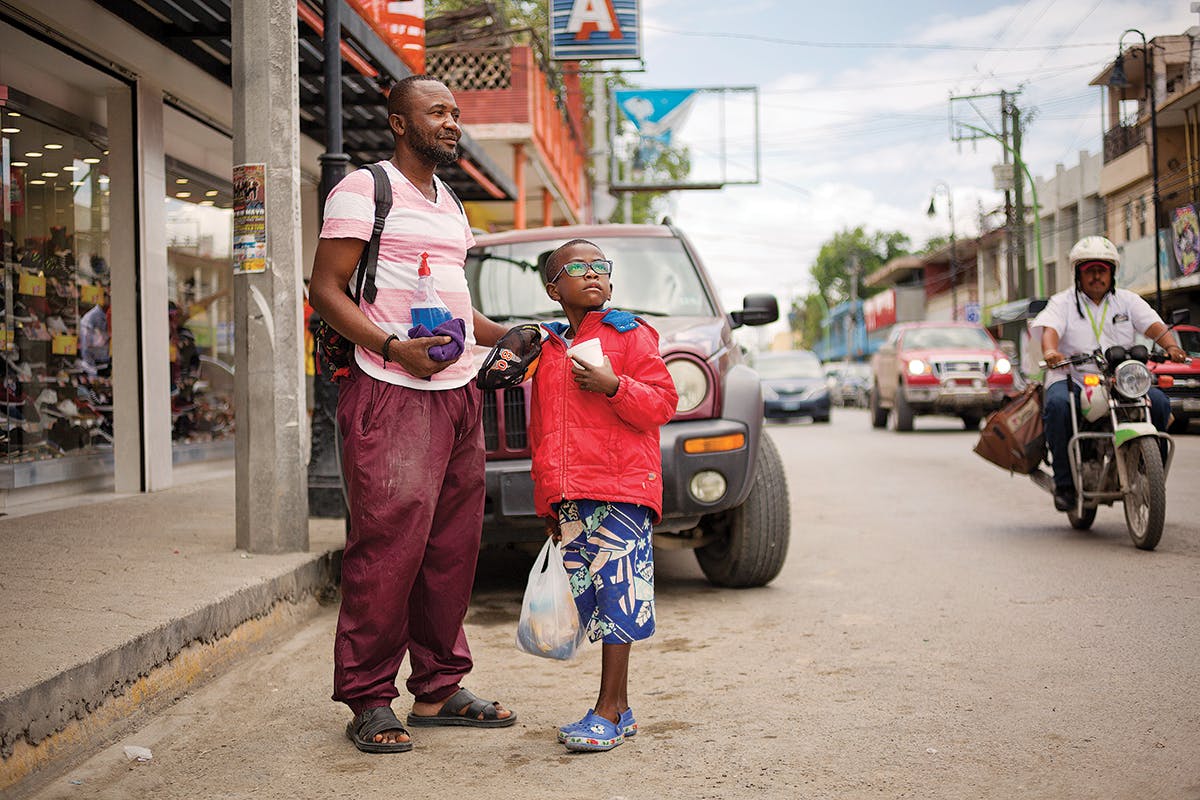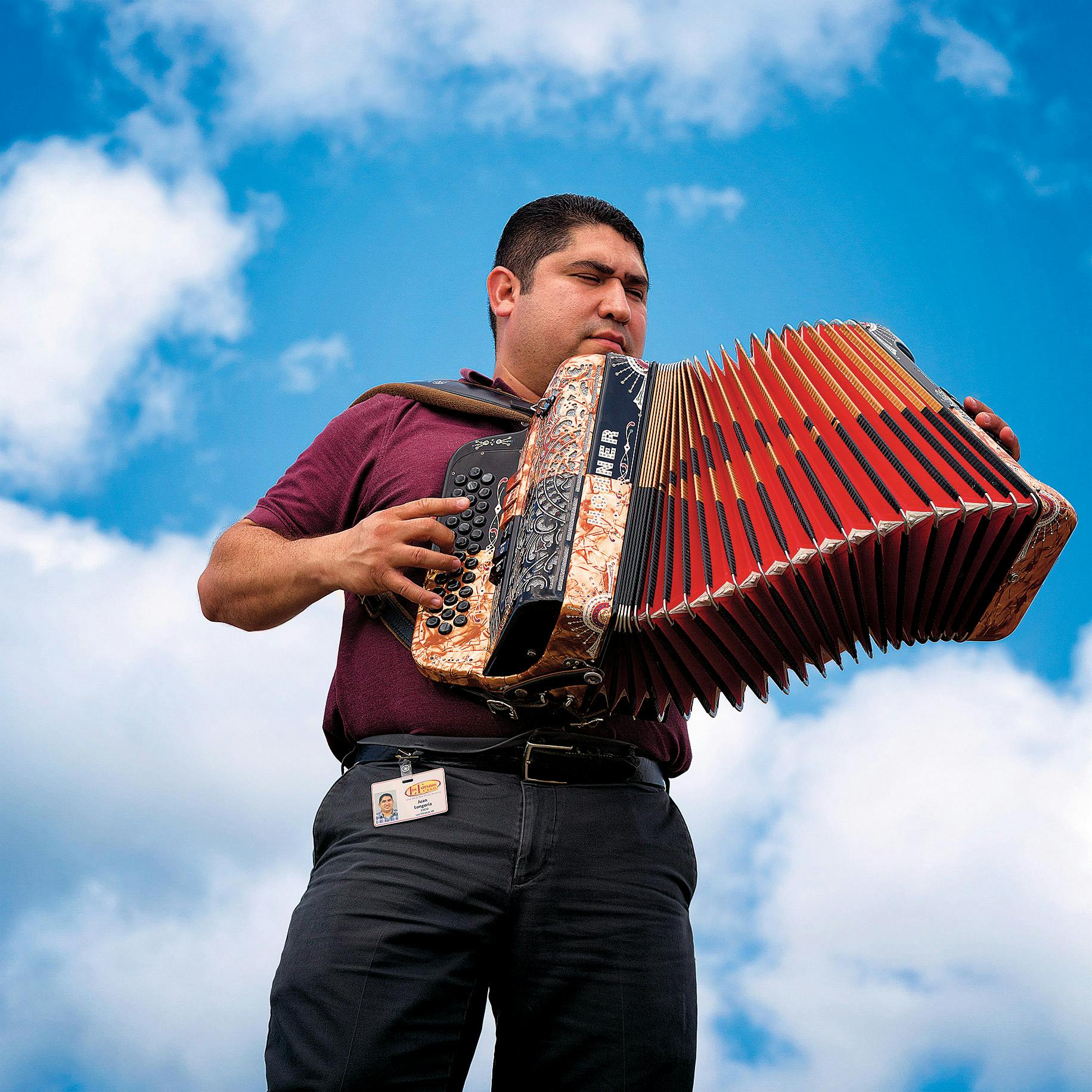The story I tell my kids is that their great-great-grandfather reached the Texas border in 1837. He was a young boy, kidnapped by Indians in northern Mexico and then abandoned on the north side of the Rio Grande, near Hidalgo. Later, more of our family migrated from Mexico, all of them settling in the same area of the upper Rio Grande Valley. We farmed on the U.S. side, but legend has it that one year, in the early 1900s, the river flooded and changed course and suddenly we had land on both sides. My father was the first to move to Brownsville, in 1944. He worked for the U.S. Department of Agriculture, patrolling remote stretches of the Rio Grande on horseback to make sure livestock weren’t crossing over and possibly bringing fever ticks into the U.S. Although I moved away to Austin for college, in 1985, and eventually settled there, these and other stories of the border stayed with me. I’ve written a collection of short fiction, two novels, and more than a dozen essays dealing with my family’s time in Brownsville.
When I became a father, I wanted my children to know something about the place we came from. They were just babies when I took them to visit their grandparents. Over the years, I took them to family reunions so they could meet all their cousins who still live on the border. I even took them to see the little house where I grew up. So far, they’ve indulged me by not complaining too much about the six-hour drive from Austin to Brownsville, but lately my ten-year-old, Elena, has begun to wonder why I’m so “obsessed with talking about the border.”
If this is an obsession, then it has to do with what I see as an incomplete story being told about the region, which is constantly in the news and often comes up at the dinner table. It’s a topic that my two kids, Elena and Adrian, who just turned twelve, are bound to hear about. They are, whether I like it or not, getting only part of the story. Because just as there are two sides of the Texas-Mexico border, there are also two narratives of the place.
One version tells us the border is a lawless land, a region in constant crisis, overrun with crime, unauthorized immigration, asylum camps, kids locked in cages, drug smuggling, cartel violence, armed militias. You know this story. In this telling, the border is the place where Texas ends and Mexico begins.
The other version reveals a region that’s home to parents and tíos and abuelas, of comadres and primos, of people raising their families, of people enduring, of people falling in and out of love, of people dreaming their own dreams. This is the border of my youth.
In May, I flew to El Paso to meet up with Joel Salcido, a good friend and talented photographer who grew up there. Together we set out on a weeklong journey, driving the length of the Rio Grande. In talking to and photographing people on the streets, in the plazas and cafes, and along the bridges that cross over into Mexico, we attempted to uncover that other narrative of the border. To find some way of sharing with Elena the story that she, and the rest of us, need to hear.
Friday, May 10
Dear Elena,
It was raining this morning in El Paso and the clouds hung heavy over the Franklin Mountains, so much so that we couldn’t see the peaks and where the rest of the sky began. The weather needed to clear up before my friend Joel could take pictures. We parked next to a convenience store in El Segundo Barrio, a historic part of the city where so many immigrants from Mexico used to pass through in the 1800s, some of them getting here at the same time that immigrants from Europe were arriving in New York City. When it stopped drizzling, we stepped out of the car, and a few minutes later a bearded man came hobbling down the street. He used a wooden cane to walk, but when he stopped to say good morning, he began to tip from his left foot to his right, back and forth, over and over, like he’d forgotten which one was his good leg and so he had to try them both out. He was from El Segundo Barrio, in case anybody wanted to know. But all his life he had also crossed back and forth to Juárez, he told us. Then he continued hobbling along in the same direction he was heading before stopping to ask what Joel was doing in the middle of the street taking pictures. It wasn’t too much later that the sun finally came out.
Love,
Dad

Saturday, May 11
Hi Elena,
It took us four hours to drive from El Paso to a little town called Presidio. On the way, Joel and I talked about the people we’d met so far. I told him that at a panadería yesterday one of the bakers reminded me of my tío Hector. Something about the man’s eyes. The baker was from Juárez, and it made me wonder whether everyone has a twin version of themselves somewhere. And then Joel told me about a woman he’d photographed in El Paso a couple days earlier, a singer who sometimes performs as a woman and sometimes performs as a man. Her name is Amalia, but when she dresses and sings as a man, his name is Tereso. She sings in English and Spanish, and is great in both languages. She performs across the river too, in Juárez. Unless you already know Amalia, it is hard to tell it’s her when she’s pretending to be Tereso, who even wears a fake mustache and makeup so it looks like he needs a good shave. She does this because when she was growing up, her dad wanted a boy and treated her like a boy, which sometimes made things tough for her. But later, when she started performing, she decided to cross a border, one inside herself, and on the other side she could pretend to be a boy, or a man, really, and she could do it her way. Now that she’s older, she gets to choose when she wants to cross back and forth, and either way she’s lucky because she knows who she is.
Love you,
Dad

Sunday, May 12
Dear Elena,
Yesterday we walked from Presidio over to Ojinaga, on the Mexican side. From the bridge we saw a man playing with his three kids in the shallow water. A little boy and two girls, close to your age. Their car was parked on the Mexican side of the river and the kids were taking turns pouring water on their father’s head and he was acting like they had him trapped and he couldn’t get away, like he was their prisoner, only he was laughing and so were they every time he fell trying to escape. Immigration guards were stationed on the bridge, right at the boundary between the two countries, where they could make sure people didn’t try to step into the U.S. without having all the right papers. But the guards were also keeping an eye on the family in the water. It didn’t matter, because the father and his kids never noticed they were being watched, and the whole time they stayed in the middle of the river, equal distance from either side, like they’d forgotten there was a this side and a that side.
Con cariño,
Dad

Monday, May 13
Elenita,
I forgot to tell you something else that happened while we were walking across the bridge to Ojinaga. It was really hot, plus we were still at a high altitude (2,600 feet), and we were trying to figure out if we wanted to keep walking in the sun and how far it was to the downtown in Ojinaga, or at least how far it was to the next bit of shade. So we asked a young woman who was coming in the opposite direction how to get to the main plaza. Her name was Molly. She had brown hair and was light skinned, like she might sunburn if she wasn’t careful. We weren’t sure at first, but she turned out to be from the U.S., from Presidio. The next thing we asked her was why she was carrying a mariachi outfit. She told us she was performing that night with a mariachi group that included some of her students from Presidio High School, where she’s the assistant band director, and then afterward would be walking back across the bridge. She lives in Ojinaga because a year ago she married a guy originally from Veracruz, and he isn’t allowed to live on the U.S. side, so they live on the Mexican side and every morning during the week she crosses over to work in Presidio and then back again at the end of the day. Five days a week, back and forth. She doesn’t mind it, though. There’s more to do in Ojinaga, and anyway, she’s in love.
Miss you,
Dad

Tuesday, May 14
Hi Elena,
In Del Rio, we met a husband and wife who were holding hands as they walked across the bridge to Ciudad Acuña to buy corn tortillas, and right away we thought, Wow, those must be some great tortillas. We never found the tortillas ourselves, but in Acuña we met a father and his young son who were from Central Africa. They both had learned Spanish in just the last three months. The father cleaned windshields when cars stopped at a busy intersection, and meanwhile, the boy stood on the sidewalk, asking people for “ayuda” and jiggling a Styrofoam cup, a few lonely pesos rattling at the bottom. The father, when he thought we might take his photo, removed his baseball cap and smoothed down his hair. The son wore thick glasses and kept blinking like the glasses weren’t helping. To get to Acuña, they had first migrated to Ecuador, which means after arriving in South America, the father and his little boy probably traveled overland through Colombia, Panama, Costa Rica, Nicaragua, Honduras, El Salvador, Guatemala, and finally Mexico, where they were stopped at the bridge because they didn’t have permission to enter the U.S. It seemed like such a long way to travel only to be stuck cleaning windshields and jiggling a cup. And then suddenly walking across the bridge to buy some tortillas didn’t seem so far.
Love you,
Dad

Thursday, May 16
Hi Elenita,
We finally made it down to the Valley, closer to where I grew up. We’re just as close as we have been to the river all week, but it feels like there are more Border Patrol agents everywhere. On the highways, in the neighborhoods, at the Whataburger. They’re looking for people—fathers and mothers and sometimes even kids—who come from other countries, like Mexico and Guatemala and Honduras, and cross into the U.S. without permission. Many of these people come because they were living in a dangerous place and thought someone could hurt their kids if they stayed. They come for work and to be able to feed their families. And some come because they have been separated from their father or mother and they want to be a family again. The next morning we went out to the country, where men and women were picking melons. It’s hard work, stooping over and over to pick up the melons in the sun. But this is the melon season, when the farmers need someone to pick the fruit so it can get to stores for the rest of us to buy. These are the people who do the work, the ones no one sees, starting early in the morning so they can pick faster. Melon by melon, row after row after row. Joel took a few pictures and then we left before it got too hot.
Con cariño,
Dad


Friday, May 17
Elenita,
We visited a high school yesterday in Los Fresnos, a little town just a short drive from Brownsville. We stopped there because we were looking for a music teacher who shows his kids how to play conjunto music. Sometimes I play this type of music in the car and you tell me to please, please, please turn it off. I used to hate it too when I was growing up. It’s the old-fashioned music your grandparents used to listen to when they were farmworkers. They told me that at the end of each week the musicians would come play at the migrant camps where the people stayed and someone would sprinkle water over the dirt so everyone could dance without making it too dusty. And that was more than eighty years ago, so now the music is super old-fashioned. But that’s what made this teacher and his students so special (you might say weird). Outside of school, they probably listen to hip-hop or rock or country with their friends, but at school they had decided it was cool to play the music of their grandparents and great-grandparents. To sing in Spanish and play the accordion and even a bass and electric guitar, which is less traditional but still traditional because of the way they play the instruments. It was like they had stepped forward in time and still had one foot behind them, watching the dust rise up as their music played on.
Wish you were here,
Dad

Saturday, May 18
Hi Elena,
We reached the end of the river. You’ve never been here, but someday, if you want, I can bring you to see it. This is where the Rio Grande, the river that for more than 1,200 miles divides one side from the other, meets the Gulf of Mexico. East of here, the Gulf becomes the Caribbean Sea, and then farther out it turns into the Atlantic Ocean, where it connects to Europe and the coast of Africa. But here the water isn’t very deep or all that wide. When I was about your age, my parents would bring me here and, believe it or not, I would swim across, from this side to the other side, to the beach on the Mexican side. Yes, to Mexico! I know it sounds crazy, but nobody thought it was back then. This morning, on the U.S. side, close to where we parked on the public beach, I saw an older man with waders and a fishing pole enter the water, and on the opposite side a younger man wearing cutoffs took his own fishing pole into the river. The young one shouted something to the older one and the older man took a few steps forward—they were maybe fifty yards apart—but the wind was blowing hard and they couldn’t hear each other, so instead they waved. Maybe they were trying to say the water was cold. Maybe they were wishing each other luck. I can’t even say if they were speaking English or Spanish or maybe a little of both, but the wave they gave each other seemed to be enough to get across what they wanted to say.
See you soon,
Dad

This article originally appeared in the August 2019 issue of Texas Monthly with the headline “Postcards from the Border.” Subscribe today.








